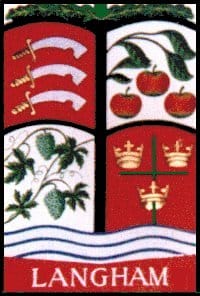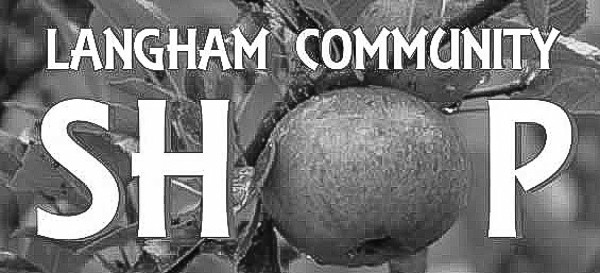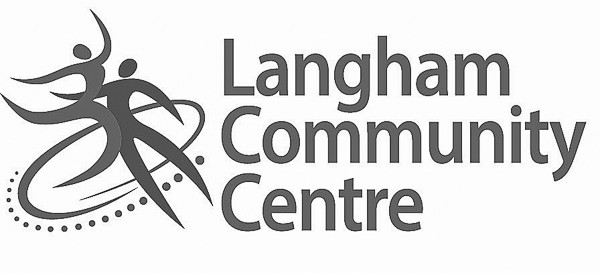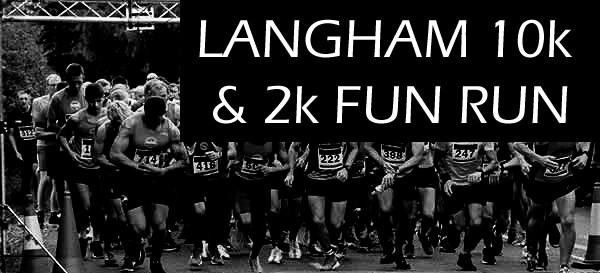LANGHAM

SOCIAL HISTORY IN THE 20th CENTURY
That there was poverty in the village at the beginning of the century is evident by the fact that in 1897, 123 blankets were distributed through Thomas Love's Charity. It should be remembered that there was no welfare support available for the sick, disabled, aged or unemployed then, other than Poor Law Relief and Workhouse accommodation. Life was very hard and many young people left villages and went to the north or to the colonies.
Homes were lit by oil lamps or candles; heating and cooking used wood and coal. Water was obtained through wells, springs and ponds. There was no sanitation and no collection of domestic waste. To dispose of all this deep pits had to be dug at the edge of a field or garden and the pit then covered with earth.. Cottages produced as much food for themselves as they could, growing vegetables and keeping chickens and ducks. In 1900 the Parish Council hired from the Squire about four acres of land near the Shepherd and Dog for £8 a year, and divided it into allotment gardens for local people to use.
There was a local elementary school, a Baptist Chapel and a Methodist Chapel, as well as the Parish Church of St. Mary.
During the period between the two World Wars the farming industry itself was in depression and many cottages were left in a state of disrepair and untenanted. Towards the end of the 1920s there was evident need for good housing for agricultural workers so the Lexden & Winstree Rural District Council built family houses at Hillcrest and Wick Road to satisfy this need.
About this time electricity was brought into the village. Mains water supplies were brought to the village in 1939.
With the relaxation of building restrictions in the 1950s and 60s modern housing development changed the village. The raising of the school leaving age meant that children over 11 years old were taken into senior school in Colchester and the village school became a Primary school.
The electrification of the railway between Colchester and London in the 1960s and the construction of of the A12 dual carriageway, ten years later, made Langham into a "commuter village".
The population has now risen to about 1,000 and a vast majority of people work out of the village.
The village has an eight acre Recreation Ground, administered by the Parish Council, which accommodates a children's play area, two tennis courts and a football pitch. There is also on the Ground a modern Community Centre, with a large hall, club room, bar and committee room, together with changing rooms, showers and toilet facilities. This is used by clubs and societies throughout the county as well as by Langham people.
Homes were lit by oil lamps or candles; heating and cooking used wood and coal. Water was obtained through wells, springs and ponds. There was no sanitation and no collection of domestic waste. To dispose of all this deep pits had to be dug at the edge of a field or garden and the pit then covered with earth.. Cottages produced as much food for themselves as they could, growing vegetables and keeping chickens and ducks. In 1900 the Parish Council hired from the Squire about four acres of land near the Shepherd and Dog for £8 a year, and divided it into allotment gardens for local people to use.
There was a local elementary school, a Baptist Chapel and a Methodist Chapel, as well as the Parish Church of St. Mary.
During the period between the two World Wars the farming industry itself was in depression and many cottages were left in a state of disrepair and untenanted. Towards the end of the 1920s there was evident need for good housing for agricultural workers so the Lexden & Winstree Rural District Council built family houses at Hillcrest and Wick Road to satisfy this need.
About this time electricity was brought into the village. Mains water supplies were brought to the village in 1939.
With the relaxation of building restrictions in the 1950s and 60s modern housing development changed the village. The raising of the school leaving age meant that children over 11 years old were taken into senior school in Colchester and the village school became a Primary school.
The electrification of the railway between Colchester and London in the 1960s and the construction of of the A12 dual carriageway, ten years later, made Langham into a "commuter village".
The population has now risen to about 1,000 and a vast majority of people work out of the village.
The village has an eight acre Recreation Ground, administered by the Parish Council, which accommodates a children's play area, two tennis courts and a football pitch. There is also on the Ground a modern Community Centre, with a large hall, club room, bar and committee room, together with changing rooms, showers and toilet facilities. This is used by clubs and societies throughout the county as well as by Langham people.






